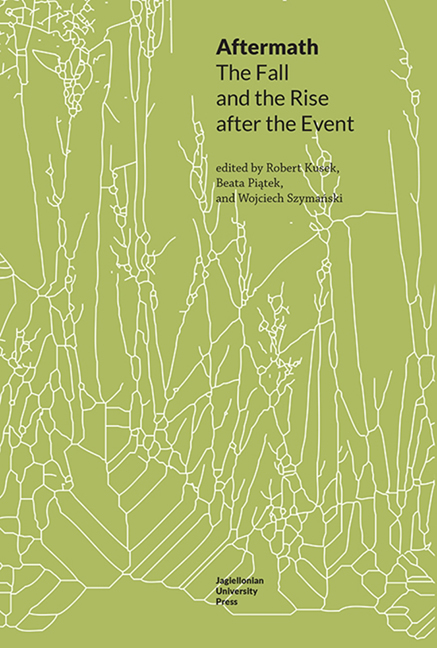Memory of the Holocaust: Vicarious Trauma and Counter-Monuments in The Hideout by NeTTheatre
Published online by Cambridge University Press: 06 November 2021
Summary
Introduction
The aim of this article is to examine the strategies of remembering the Holocaust employed in the performance project: Kryjówka/The Hideout by a Polish theatre group NeTTheatre. The project was first performed in 2014, but this discussion will be based on my participation in it as a viewer in 2015 during the Klamra theatre meeting in Toruń in the Od Nowa students’ club. The group was awarded the Audience Award at the festival for this performance. The NeTTheatre was one of the first theatre companies experimenting with the forms of online theatre: their performance called The Rest (2007) based on the works by Stanisław Wyspiański (a Polish modernist dramatist, painter, and poet) was transmitted live on the internet, inviting comments and interventions from online followers, creating a type of online immersive theatre. The Hideout moves into a different cultural space, but invites contributions and participation in the immersive and largely experiential performance.
In The Hideout the viewer actively (re)experiences the affective intensity of the Holocaust survival: its ambivalent mixture of secrecy and exposure, safety and imprisonment, fear and indifference. As many viewers report and the artists repeat in interviews, the project involves a strong emotional participation on the part of the audience, their commitment and readiness to share the affective load of the performance, combined with uncomfortable physical experience, which might reach higher levels of tension in the viewers suffering from claustrophobia. NeTTheatre also involves the viewers in the project of collecting personal stories of the Holocaust survival, expanding the range of collective memory and turning the traumatic past into a form of collective experience, which – despite the pain and horror of the stories – releases the positive aspects of celebration and relief which the confrontation with the unspeakable brings.
Trauma, Memory, Witnessing
I would like to situate my discussion of the performance, which to a large extent fulfils therapeutic functions, in the context of the theories of cultural trauma, collective memory, and witnessing in order to account for the complex network of emotions and relations that it creates and through which it affects the viewers. To this end, I will refer to selected concepts from Jeffrey Alexander's discussion on cultural trauma and the Holocaust, Ann Kaplan's concepts of trauma culture and vicarious trauma, as well as Shoshana Felman's and Cathy Caruth's reflections on witnessing.
- Type
- Chapter
- Information
- AftermathThe Fall and the Rise after the Event, pp. 51 - 62Publisher: Jagiellonian University PressPrint publication year: 2022



